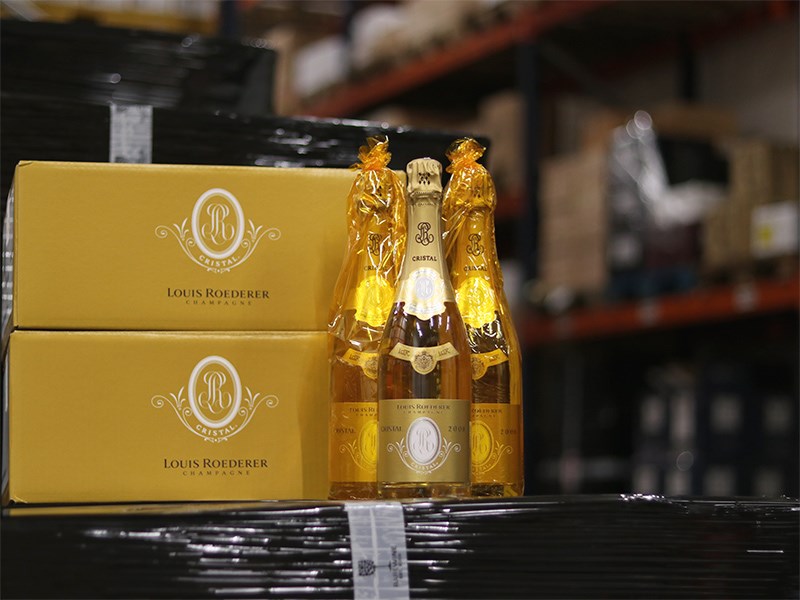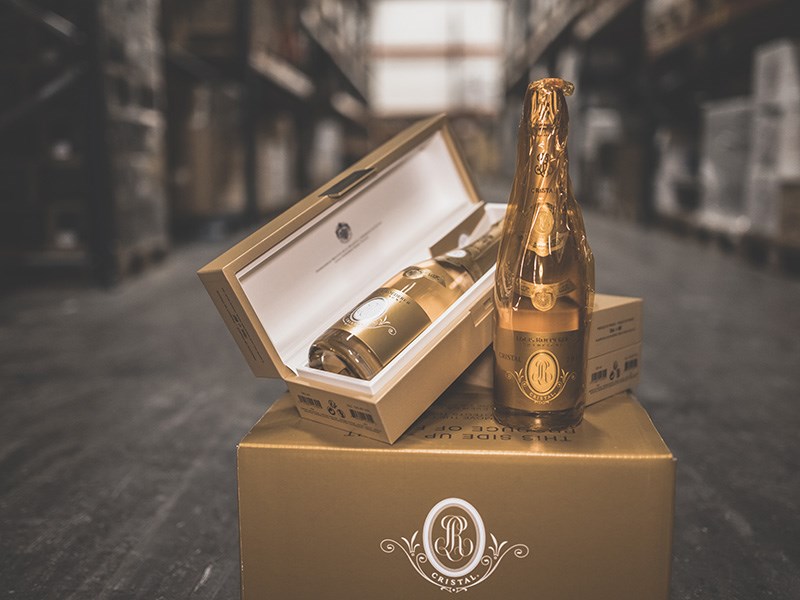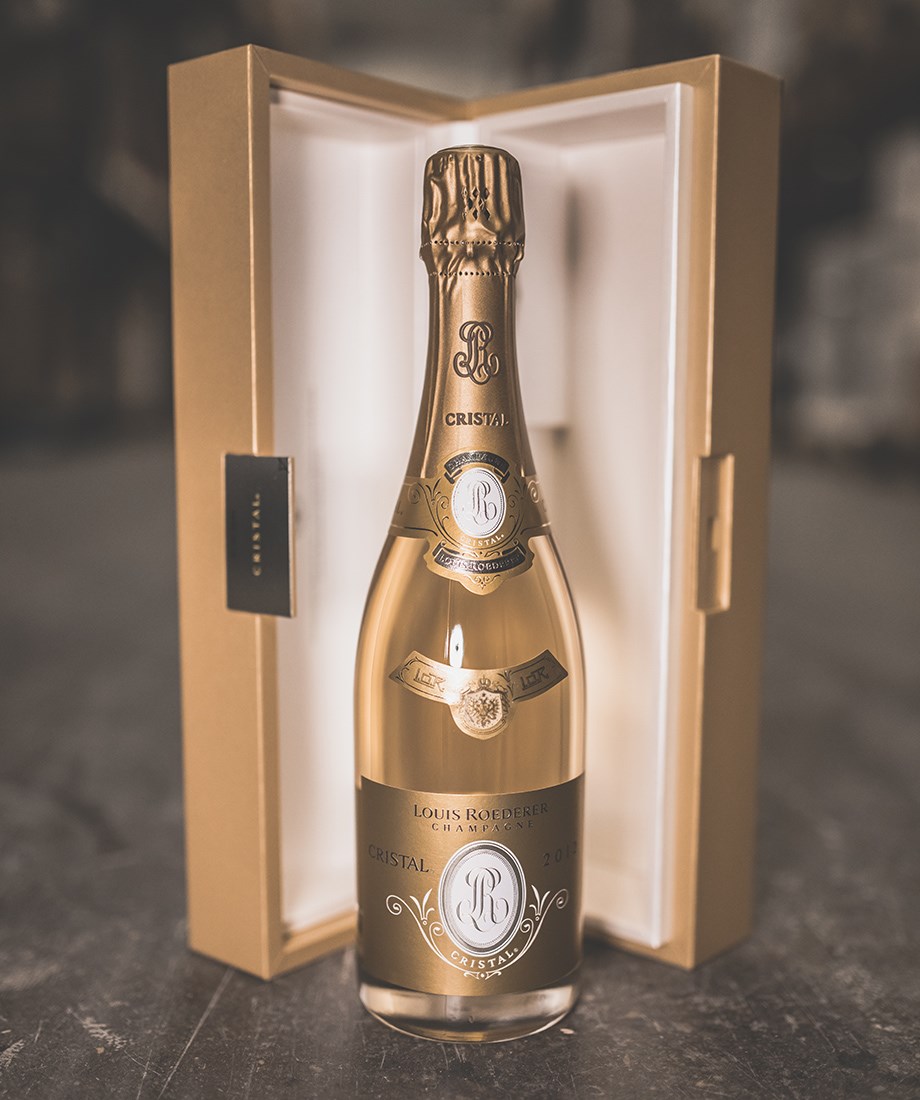Article - RareWine Academy
The Myth Of Cristal: Crystal Clear, Exclusive And Tamper-Proof
Read the story of how a Russian tsar initiated the creation of Cristal, which today is coveted and loved around the world.
« A wine of pure pleasure and a sophisticated gastronomic wine, Cristal
is both powerful and delicate, combining subtlety and precision.
»— Jean-Baptiste Lécaillon, Cellar Master.
For more than 100 years, Cristal has triumphed among champagne lovers everywhere. Golden iconic cellophane protects the critically acclaimed bottle from harmful light while signaling extravagance, myth, and glory. Cristal was born out of a desire to achieve perfection. But the tale of Cristal is not all gold and luxury - it is the story of a powerful tsar, his passion for French bubbles, and justified paranoia.
What The Tsar Wants, He Shall Get
Is it strange to demand almost utopian luxury when you call the Winter Palace your home? At least that is what Tsar Alexander II of Russia did when, in 1876, he approached Louis Roederer with a wish to have the best Champagne the world had yet seen.
Few say no to a Tsar. And certainly not when the Tsar is already an enthusiastic Champagne consumer. And so began the production of Cristal - one of the best champagnes in the world.
It was typical for the great champagne estates not to own many vineyards at that time. Still, already at this early stage, Roederer distinguished itself from the other producers by holding several vineyards.
The family had the foresight to start buying these vineyards in the 1840s, which meant they knew the best parcels after many years in the vineyards. Many of these vineyards eventually received grand cru classification when that system was introduced in Champagne. After that, all that was left was the work in the cellar.
Paranoia In Full Bloom
Tsar Alexander II ruled at a turbulent time when assassinations were not uncommon. So, of course, he was always on guard - even when Champagne was being drunk. Therefore, he made almost absurd demands to produce the bottle for which Louis Roederer had been commissioned to create the substance.
The Tsar demanded that the bottle be made of clear crystal so that he could see that the wine was pure and without any trace of poison. Also, he insisted that the bottom of the bottle be completely flat so that a bomb could not be hidden under it.
Finally, of course, he wanted a gold label to signal exclusivity when the Tsar served the Champagne to himself and his guests. And even with these requirements, Cristal became a reality.

From Crystal To Glass And The Winter Palace To The Public
Today, the bottle is no longer made of crystal but clear glass that reveals the bottle's contents. And although the imminent fear of assassination no longer lingers around the Cristal bottles, the flat bottom has been preserved. To protect the Champagne from harmful UV rays, Cristal is now wrapped in golden cellophane.
There was a reason for paranoia, by the way, because an assassination attempt was, in fact, the end of Tsar Alexander II in 1881. And although the assassination was not carried out with Champagne as a weapon, the Tsar's history is written in Cristal. And because Louis Roederer created fantastic Champagne, they chose to market Cristal globally in 1945 - even though the Russian Revolution ended the Tsar's reign.
Cristal Today
Today, Cristal is still produced from the best Grand Cru vineyards, which Louis Roederer owns in seven different communes. The production does not follow a strict recipe but is always adapted to the vintage. This method is also why the production of sparkling wine is described as an art.
Cellar master Jean-Baptiste Lécaillon and his team taste all the different parcels Louis Roederer owns. Only the best wines will be used for Cristal. These wines come from several hundred lots owned by Roederer. They are tasted after fermentation, where they are still white wines with high acidity and low alcohol - so-called Vin Claire. When the blend is finished, one can tell where the grapes came from and the exact composition in this year's edition of Cristal.
In the vast majority of vintages, there is a slight preponderance of Pinot Noir in the blend compared to Chardonnay. There are often up to 50 different parcels that have supplied the grapes. In most cases, the grapes are selected from the different parcels according to what the vintage has to offer. All the plots that give grapes to Cristal have been farmed biodynamically since 2012.
After blending, the wine is aged with its lees for six years before disgorging. This process creates both balance and intensity in the wine.

Louis Roederer And Biodynamics
At Louis Roederer, sustainability is essential. The best vineyards are cultivated biodynamically, as is the case at Leflaive and Domaine Leroy in Burgundy. Furthermore, Roederer has a comprehensive attitude towards their use of water and other means in the winery and the vineyards. Today, Roederer has the 3rd most extensive stock of organically farmed vineyards in Champagne.
The volume of Cristal is, of course, not entirely known. Still, it is under 1 million bottles annually, making it a pretty small production for a prestige cuvée. By comparison, Dom Pérignon has probably produced more than 5 million bottles annually.
Cristal's Amazing Formations
When success is established, it is not an option to rest on the laurels. At least not for Louis Roederer, who always strives to achieve the best. That's why Cristal is produced in several varieties, but of course only in the best vintages.
Cristal Rosé
For many years there was only one Cristal, but in 1974 the first rosé version of Cristal came on the market. It is produced in even smaller quantities than the classic Cristal. In Champagne, rosé can be made by mixing red wine with white wine or leaving the skins with the must for a short period. Cristal rosé is produced by the Saignée method, which involves mixing red wine with white wine. It is done before the wine undergoes a second fermentation in the bottle in the cellar.
Vinotheque Cristal
Cristal Vinothéque is a special release that shows Cristal's ability to age in the bottle. The wines selected for the Vinothéque series are disgorged after about ten years in the cellar with a slightly lower dosage. They are then put back into the perfect cellars of Louis Roederer for another ten years before being released in small quantities to the market. This is the supreme release from Cristal.
Cristal Rosé Vinothéque
Cristal Rosé Vinothéque is pretty much identical to the story above. The wine spends a long time in the cellar after its second fermentation. It is then disgorged at a lower dosage, and the bottles are put deep in the cellar again. After that, they are eligible to be released to the open market with the Vinothéque appellation - the ultimate example of what Cristal rosé can do. The result is a small quantity of the absolute highest quality aged in perfect conditions.

The House Behind Cristal Champagne
Cristal is the Prestige Cuvée from the Champagne House Louis Roederer. Most great houses have a wine that is their absolute best, and often it is the one that makes them famous. For Louis Roederer, Cristal has held this position since the Tsar ordered the first vintage in 1876. At other champagne houses, grapes often must be bought in for the best wines. Still, at Roederer, there has always been an ambition to own a large proportion of its vineyards. This gives them complete control over both quality and price development. Roederer owns more than 240 hectares of vineyards spread over more than 410 parcels. All vineyards are cultivated organically, and the best ones, which supply the grapes for Cristal, are grown biodynamically.
The winery was founded in 1776 as Dubois Pére et fils. Still, it took its current name when Mr. Louis Roederer inherited the house in 1833. Since then, it has remained in the family's hands.
Louis Roederer was a visionary man and understood that the vineyards were the most critical factor when making the best Champagne. He, therefore, bought vineyards early on in the best locations in the region.
Today, Louis Roederer is one of the absolute leading champagne houses. Their wines from bottom to top are considered benchmarks in their categories. Most recently, Roederer has realized that climate change makes it possible to produce still wines at a high level. That's why they have revived the old Coteaux Champenois appellation, which applies to red and white wines produced in the Champagne region.
Champagne Louis Roederer is today part of the Roederer Collection group. They own and operate famous wine houses in Champagne like Roederer, Deutz, and several others. Furthermore, they own Ramos Pinto in Portugal, Diamond Creek in Napa Valley, Delas in the Rhone Valley, and Domaine Ott in Provence. All are among the best in their respective areas.
Yes, Cristal Is That Good
Among many good prestige cuvées on the champagne market, Cristal is right at the top. It can develop significantly over time while tasting terrific from the start. At Louis Roederer, they have over the years had the ability to keep the quality absolutely at the top in all the released vintages. Therefore, there is rarely negative talk about Cristal.
Furthermore, the world of music, and the hip-hop scene, have played a significant role in Cristal's fame. This whole environment placed Champagne high on a pedestal, and since then, Cristal has become the ultimate symbol of success. In Jay-Z's 1998 hit "Hard Knock Life," one line reads "And sip the Cris' and get pissy-pissy," and he was not the only prominent rapper who loved Cristal. Kanye West, 50 Cent, and Mos Def have also sent love in the direction of the crystal champagne.
The world can thank a - rightly - paranoid Russian Tsar for bringing Cristal into the world. First to the delight of guests at the Winter Palace, but thankfully now to the satisfaction of all those lucky enough to get their hands on a cellophane-wrapped clear glass bottle with a flat bottom and iconic golden label.
